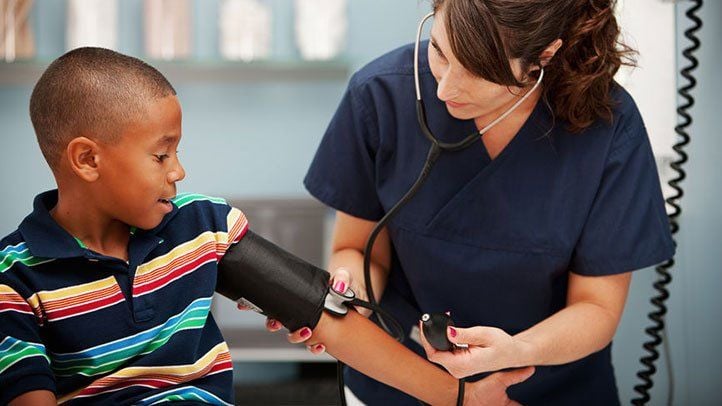Washington: Although people generally think that only middle-aged or elderly people have high blood pressure, teenagers, children and even young children can also suffer from this disease.
According to the American Heart Association, all children should be screened for high blood pressure on an annual basis, because detecting and treating the condition early improves the child’s health and can reduce or prevent the harmful effects of the condition.
reasons
High blood pressure in children can also commonly be caused by a medical condition such as heart disease or kidney disease. Hence it is called secondary hypertension and blood pressure usually returns to normal once the medical condition is cured. The following are the symptoms of secondary hypertension.
- Hyperthyroidism
- Disorders of the glands near the kidneys
- Sleep problems, especially insomnia
- Disorders of the kidneys
In addition, there is primary hypertension which has different causes than the ones mentioned above:
- Overweight or obesity
- Family history of high blood pressure
- High cholesterol
- Type 2 diabetes or elevated blood sugar from fasting
Treatment
Some important steps you can take to treat high blood pressure in children are listed below:
Lifestyle changes:
Dietary changes: Encourage a healthy, balanced diet that is low in sodium (salt) and high in fruits, vegetables, whole grains and sources of protein. Reducing salt intake can help lower blood pressure.
Weight Management: If the child is overweight or obese, weight loss is required as this can significantly lower blood pressure.
Physical activity: Encourage regular physical activity as part of a healthy lifestyle. Get your child to do at least 60 minutes of moderate physical activity every day.
Regular monitoring:
Blood pressure monitoring: Monitor the child’s blood pressure regularly at home and track progress during visits to the pediatrician and make adjustments as needed.
Keep records: Keep records of blood pressure readings and share them with health care providers.
Treatment:
Medicines may also be prescribed if lifestyle changes alone are not enough to control high blood pressure or if the child has an underlying medical condition. The choice of medication will depend on the specific conditions and any underlying causes.
Family Support:
Family involvement is critical to the success of treatment. Parents and caregivers should be educated about hypertension management and help the child make the necessary lifestyle changes.
Regular follow up:
Children with high blood pressure should be monitored regularly by a health care professional to assess their progress and adjust the treatment plan as needed.
(function(d, s, id){
var js, fjs = d.getElementsByTagName(s)[0];
if (d.getElementById(id)) {return;}
js = d.createElement(s); js.id = id;
js.src = “//connect.facebook.net/en_US/sdk.js#xfbml=1&version=v2.3&appId=770767426360150”;
fjs.parentNode.insertBefore(js, fjs);
}(document, ‘script’, ‘facebook-jssdk’));
(function(d, s, id) {
var js, fjs = d.getElementsByTagName(s)[0];
if (d.getElementById(id)) return;
js = d.createElement(s); js.id = id;
js.src = “//connect.facebook.net/en_GB/sdk.js#xfbml=1&version=v2.7”;
fjs.parentNode.insertBefore(js, fjs);
}(document, ‘script’, ‘facebook-jssdk’));



